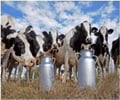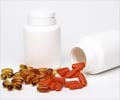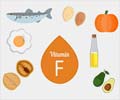Types of pasteurizations
Continuous Method
Basic Component Equipment of HTST Pasteurize
Balance Tank
The balance, or constant level tank provides a constant supply of milk.
It is equipped with a float valve assembly which controls the liquid level nearly constant ensuring uniform head pressure on the product leaving the tank. The overflow level must always be below the level of lowest milk passage in regenerator. It, therefore, helps to maintain a higher pressure on the pasteurized side of the heat exchanger. The balance tank also prevents air from entering the pasteurizer by placing the top of the outlet pipe lower than the lowest point in the tank and creating downward slopes of at least 2%. The balance tank provides a means for recirculation of diverted or pasteurized milk.
Regenerator
Heating and cooling energy can be saved by using a regenerator which utilizes the heat content of the pasteurized milk to warm the incoming cold milk. Its efficiency may be calculated as follows:
% regeneration = temp. increase due to regenerator/total temp. increase
For example: Cold milk entering system at 4° C, after regeneration at 65° C, and final temperature of 72° C would have an 89.7% regeneration:
65 - 4 / 72-4 = 89.7
Timing pump
The timing pump draws product through the raw regenerator and pushes milk under pressure through pasteurized regenerator. It governs the rate of flow through the holding tube. It must be a positive displacement pump equipped with variable speed drive that can be legally sealed at the maximum rate to give minimum holding time in holding tubes. It also must be interwired so it only operates when FDD is fully forward or fully diverted, and must be "fail-safe". A centrifugal pump with magnetic flow meter and controller may also be used.
Holding tube
Must slope upwards 1/4"/ft. in direction of flow to eliminate air entrapment so nothing flows faster at air pocket restrictions.
Indicating thermometer
The indicating thermometer is considered the most accurate temperature measurement. It is the official temperature to which the safety thermal limit recorder (STLR) is adjusted. The probe should sit as close as possible to STLR probe and be located not greater than 18 inches upstream of the flow diversion device.
Recorder-controller (STLR)
The STLR records the temperature of the milk and the time of day. It monitors, controls and records the position of the flow diversion device (FDD) and supplies power to the FDD during forward flow. There are both pneumatic and electronic types of controllers. The operator is responsible for recording the date, shift, equipment, ID, product and amount, indicating thermometer temperature, cleansing cycles, cut in and cut out temperatures, any connects for unusual circumstances, and his/her signature.
Flow Diversion Device (FDD)
Also called the flow diversion valve (FDV), it is located at the downstream end of the upward sloping holding tube. It is essentially a 3-way valve, which, at temperatures greater than 72° C, opens to forward flow. This step requires power. At temperatures less than 72° C, the valve recloses to the normal position and diverts the milk back to the balance tank. It is important to note that the FDD operates on the measured temperature, not time, at the end of the holding period.
There are two types of FDD:
Single Stem - An older valve system that has the disadvantage that it can't be cleaned in place.
Dual Stem - Consists of 2 valves in series for additional fail safe systems. This FDD can be cleaned in place and is more suited for automation.
Vacuum Breaker
At the pasteurized product discharge is a vacuum breaker which breaks to atmospheric pressure. It must be located greater than 12 inches above the highest point of raw product in system. It ensures that nothing downstream is creating suction on the pasteurized side.
Auxiliary Equipment
Booster Pump
It is centrifugal "stuffing" pump which supplies raw milk to the raw regenerator for the balance tank. It must be used in conjunction with pressure differential controlling device and shall operate only when timing pump is operating, proper pressures are achieved in regenerator, and system is in forward flow.
Homogenizer
The homogenizer may be used as timing pump. It is a positive pressure pump; if not, then it cannot supplement flow. Free circulation from outlet to inlet is required and the speed of the homogenizer must be greater than the rate of flow of the timing pump.
Magnetic Flow Meter and Centrifugal Pump Arrangements
Magnetic flow meters can be used to measure the flow rate. It is essentially a short piece of tubing (approximately 25 cm long) surrounded by housing, inside of which are located coils that generate a magnetic field. When milk passes through the magnetic field, it causes a voltage to be induced, and the generated signal is directly proportional to velocity. Application of the magnetic flow meter in the dairy industry has centered around its replacing the positive displacement timing pump as the metering device in HTST pasteurizing systems, where with certain products the timing pump rotors reportedly wear out in a relatively short period of time.
In operation, the electrical signal is sent by the magnetic flow meter to the flow controller, which determines what the actual flow is compared to the flow rate set by the operator. Since the magnetic flow meter continuously senses flow rate, it will signal the electronic controller if the actual flow exceeds the set flow rate for any reason. If the flow rate is exceeded for any reason, the flow diversion device is put into diverted flow. A significant difference from the normal HTST system (with timing pump) comes into focus at this point. This system can be operated at a flow rate greater than (residence time less than) the legal limit. However, it will be in diverted flow and never in forward flow.
Another magnetic flow meter based system with an AC variable frequency motor control drive on a centrifugal pump is also possible in lieu of a positive displacement metering pump on a HTST pasteurizer.
This system does not use a control valve but rather the signal from the magnetic flow meter is transmitted to the AC variable frequency control to vary the speed of the centrifugal pump. The pump, then controls the flow rate of product through the system and its holding time in the holding tube.
Automated Public Health Controllers These systems are used for time and temperature control of HTST systems. There are concerns that with sequential control, the critical control points (CCP's) are not monitored all the time; if during the sequence it got held up, the CCP's would not be monitored. With operator control, changes can be made to the program which might affect CCP's; the system is not easily sealed. No computer program can be written completely error free in large systems; as complexity increases, so too do errors.
This gives rise to a need for specific regulations or computer controlled CCP's of public health significance:
Dedicated Computer - No other assignments, monitor all CCP's at least once/sec
Not under control of any other computer system or override system, i.e., network
Separate computer on each pasteurizer
I/O bus for outputs only, to other computers no inputs from other computers
On Loss of Power - Public health computers should revert to fail safe position (e.g. divert)
Last state switches during power up must be fail safe position
Programs in ROM - tapes/disks not acceptable
Inputs must be sealed, modem must be sealed, program sealed
On Loss of Power - No operator override switches
Proper calibration procedure during that printing - Public health computer must not leave public health control for > 1 sec and upon return must complete 1 full cycle before returning to printing
FDV position must be monitored and temperature in holding tube recorded during change in FDV position
Download from ROM to RAM upon startup
Integrated with CIP computer which can be programmed e.g.,
FDV, booster pump controllable by CIP computer when in CIP made only.
Although pasteurization is a popular and effective process but for some other food products which cannot be pasteurized or the bacterial strains are resistant new technologies are being developed and one of them is food irradiation.










